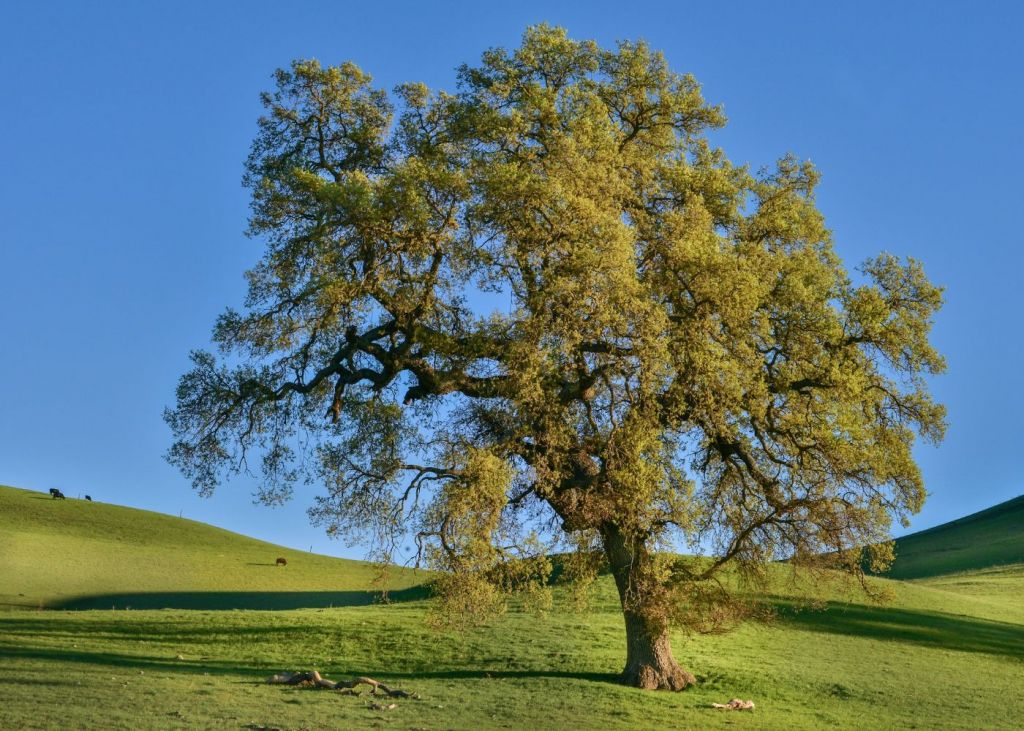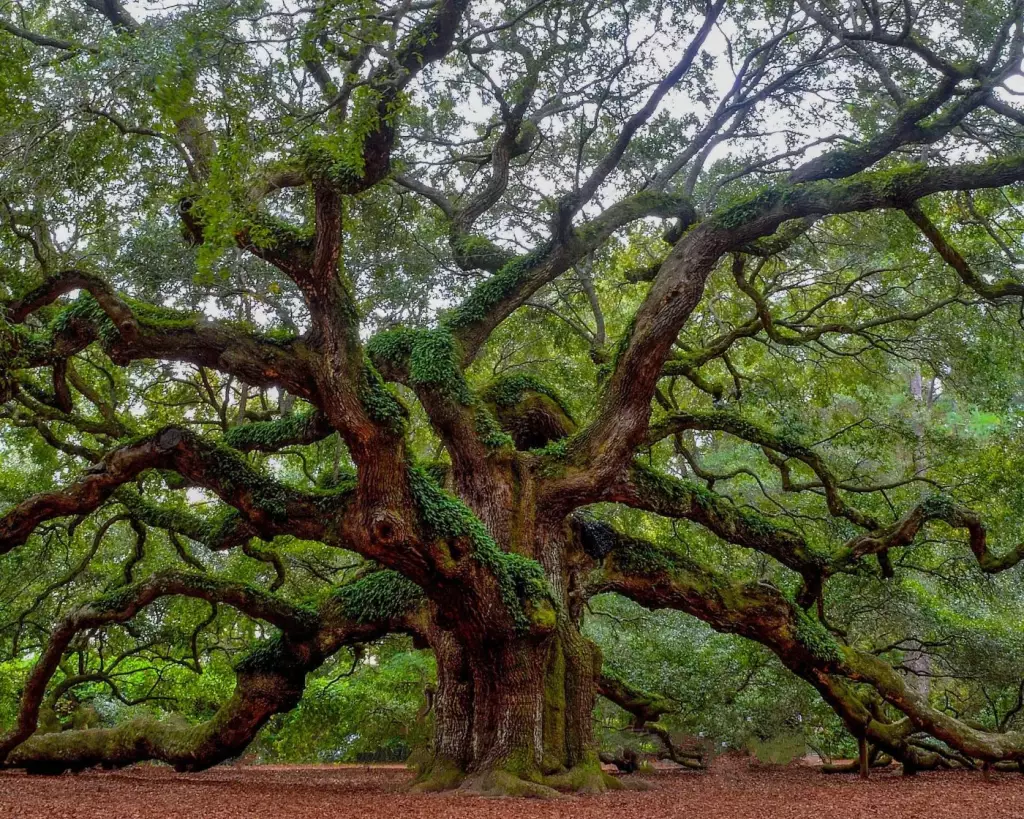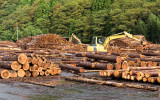How Many Oak Trees Should You Plant per Acre?
Different species of oak have varying growth rates and space requirements, which can affect the number of trees you should plant per acre. Planting too few trees can result in a sparse forest, while planting too many can lead to overcrowding and stunted growth. Therefore, in this article, we will help you determine how many oak trees you should plant on an acre.
For red oak species, the rule of thumb is to plant between 50 and 80 red oak trees per acre because these species require more space to grow. Meanwhile, white oak species can be planted at a higher density, between 80 and 100 white oak trees per acre.
Now, if you're planting oak trees in urban areas, you should plant fewer trees per acre compared to rural areas. A good rule of thumb is to plant between 30 and 50 oak trees per acre in urban areas to allow for enough space for the trees to grow and develop a healthy crown. Let's take a look at other factors that determine the number of oak trees you can plant on an acre.
Summary
- If the goal is to maximize timber production, the density per acre of oak trees may be lower to allow for larger, more valuable trees to grow.
- If the goal is to promote wildlife habitat or recreation, you can plant a higher density of oak trees on an acre.
- If you live in an area with harsh weather conditions, you may need to plant fewer trees per acre to ensure that they have enough resources to grow properly.
- Large oak trees are best suited for planting in rural landscapes or large parks because they need to be spaced 20 feet apart to be able to plant 110–200 trees per acre.
- The recommended spacing for oak trees is 30 to 40 feet apart, depending on the species.

On this page:
Density of Oak Trees per Acre
The number of oak trees you should plant per acre varies depending on several factors, including the oak species, the size of the trees, and the condition of the land.
Recommended oak tree density per acre based on species
The table below shows how many oak trees can be planted on an acre based on species:
| Oak species | Recommended Density per Acre |
|---|---|
| Red Oak | 50-80 trees |
| White Oak | 80-100 trees |
Density per acre for red oak species
Red oak species, such as Northern Red Oak and Southern Red Oak, typically require more space to grow compared to white oak species. A good rule of thumb is to plant between 50 and 80 red oak trees per acre.
These species tend to have larger crowns and wider branching patterns, which means they need more room to spread out. Additionally, red oak species tend to have slower growth rates compared to white oak species, which means they need more time to mature and develop.

Density per acre for white oak species
Meanwhile, you can plant between 80 and 100 white oak trees per acre. White oak species, such as White Oak and Swamp White Oak, can be planted at a higher density compared to red oak species.
These species tend to have smaller crowns and narrower branching patterns, which means they can be planted closer together without interfering with each other's growth. Additionally, they tend to have faster growth rates compared to red oak species, which means they can mature and develop more quickly.
For these reasons, a higher density of white oak trees per acre is recommended, to allow for a denser canopy cover and provide more acorns for wildlife.
An acre of white oak is known to have a value between $10,000 to $15,000. These species are considered to be one of the most profitable trees to grow.
Recommended density per acre based on the size of the oak tree
A detailed table on how the size of the oak tree affects the number of trees you can plant on an acre is shown below:
| Tree Size | Size Range at Planting | Spacing | Estimated Trees per Acre |
|---|---|---|---|
| Small | 6-12 feet | 8 feet | 680-1,360 |
| Medium | 12-18 feet | 12 feet | 300-680 |
| Large | 18-24 feet | 20 feet | 110-200 |
Density per acre for small oak trees
For small oak trees with a size range of 6-12 feet, the recommended spacing is 8 feet between each tree, which results in an estimated 680-1,360 trees per acre.
Small oak trees are ideal for planting in areas where space is limited, such as urban environments or small backyards. They are also a good choice for areas with poor soil quality, as they require fewer nutrients and water to grow.
Density per acre for medium oak trees
For medium oak trees with a size range of 12-18 feet, the recommended spacing is 12 feet between each tree, which results in an estimated 300-680 trees per acre. This can vary depending on the specific species of oak, as well as the desired outcome of the forest management plan.
For example, if the goal is to maximize timber production, the density may be lower to allow for larger, more valuable trees to grow. On the other hand, if the goal is to promote wildlife habitat or recreation, a higher density may be desirable.
Density per acre for large oak trees
For large oak trees with a size range of 18-24 feet, the recommended spacing is 20 feet between each tree, which results in an estimated 110-200 trees per acre.

These trees are best suited for planting in large areas with ample space, such as rural landscapes or large parks. Large oak trees require a lot of nutrients and water to grow, and they may not thrive in areas with poor soil quality or limited water resources.
Large oak trees typically take many years to reach maturity and produce acorns, but they can provide significant shade and habitat for wildlife. Aside from this, very large oak trees measuring more than 60 feet are known to have a value between $10,000-$20,000+.
You can learn more about the factors that determine the value of an oak tree in this article.
Recommended density per acre based on land conditions
| Area | Recommended number of oak trees per acre |
|---|---|
| Urban | 30-50 |
| Rural | 50-100 |
Planting trees, especially oak trees, is an effective way to combat climate change and improve the environment. Oak trees are known for their ability to absorb carbon dioxide, provide shade, and support wildlife habitats.
The number of oak trees that can be planted in both urban and rural areas depends on various factors such as available space, soil quality, and environmental conditions.
Density per acre when planting oak trees in urban areas
In urban areas, space is often limited, and the quality of soil is not always ideal for planting trees. However, planting oak trees in urban areas can provide numerous benefits such as improving air quality, reducing the urban heat island effect, and providing shade.
The recommended number of oak trees per acre in urban areas is 30-50. This means that for every acre of land in an urban area, 30-50 oak trees can be planted.
However, if the available space is limited, the number of trees that can be planted may be lower. Additionally, if the soil quality is poor, the number of trees that can be planted may also be lower.
Density per acre when planting oak trees in rural areas
In rural areas, there is often more space available for planting trees, and the soil quality is generally better than in urban areas. Planting oak trees in rural areas can provide numerous benefits such as supporting wildlife habitats, reducing erosion, and improving soil quality.
The recommended number of oak trees per acre in rural areas is 50-100. This means that for every acre of land in a rural area, 50-100 oak trees can be planted.
Rural areas typically have more space available for planting trees. This means that there is more land available to plant trees, and therefore, a higher number of trees can be planted per acre.
Additionally, the soil quality in rural areas is generally better than in urban areas. This means that the soil can support more trees per acre, which is why the recommended number of oak trees per acre in rural areas is higher than in urban areas.
Consider These When Deciding How Many Oak Trees to Plant per Acre
When deciding how many oak trees to plant per acre, here are some of the most important factors to consider:
Soil quality and type
Oak trees prefer well-drained soil that is rich in nutrients. If the soil is too wet or too dry, the trees may not grow properly.
You should also consider the type of soil you have. For example, sandy soil may require more trees per acre than clay soil, as it is less fertile and retains less moisture.
Climate and weather conditions
Oak trees prefer moderate temperatures and moderate rainfall. If you live in an area with harsh weather conditions, you may need to plant fewer trees per acre to ensure that they have enough resources to grow properly.
Available water and drainage
If you don't have enough water available, your trees may not grow properly. You should also consider the drainage of the soil.
If the soil doesn't drain well, your trees may suffer from root rot or other problems. You may need to plant fewer trees per acre if your soil has poor drainage.

Desired outcome and purpose of the planting
You should also consider your desired outcome and purpose for planting oak trees. If you want to create a dense forest, you may need to plant more trees per acre.
If you want to create a more open and natural forest, you may need to plant fewer trees per acre. You should also consider the size of the trees you want to plant. Larger trees may require more space, while smaller trees may require less space to grow.
Techniques for Planting and Maintaining Oak Trees
Choosing between seedling vs. transplanting
When planting oak trees, you have the option of using seedlings or transplanting mature trees. Seedlings are less expensive and easier to plant, but they take longer to mature.
Transplanting mature trees can be more expensive, but they provide immediate shade and aesthetic value. However, they may experience transplant shock, which can stunt their growth.
It is recommended to plant seedlings if you have the time to wait for them to mature, but if you need immediate results, transplanting may be the better option.
Proper spacing and arrangement
Oaks need plenty of space to grow, and overcrowding can lead to stunted growth and disease. The recommended spacing for oak trees is 30 to 40 feet apart, depending on the species.
When planting, make sure to arrange the trees in a way that allows for proper sunlight and air circulation. Avoid planting too close to structures or other trees, as this can lead to competition for resources.
Knowing the optimum planting density for your oak species can help you maximize your profits from an acre of these trees.
Fertilization and soil amendments
Oak trees do not typically require fertilization, but if your soil is lacking in nutrients, you may want to consider adding fertilizer or soil amendments. Before planting, test your soil to determine its nutrient content and pH level.

If necessary, add fertilizer or soil amendments according to the test results. Be careful not to over-fertilize, as this can lead to excessive growth and weak branches.
Pest and disease management
Oak trees are susceptible to a variety of pests and diseases, including oak wilt, root rot, and gypsy moths. To prevent these issues, maintain healthy trees through proper watering, pruning, and fertilization.
If you notice any signs of pest or disease, such as wilting leaves or discolored bark, contact a certified arborist for treatment options. Regular inspections and preventative measures can help keep your oak trees healthy and thriving.



